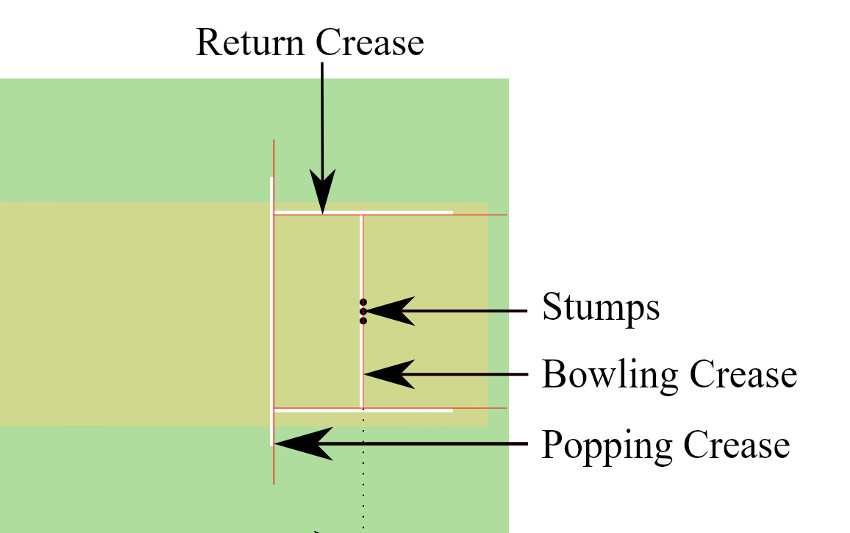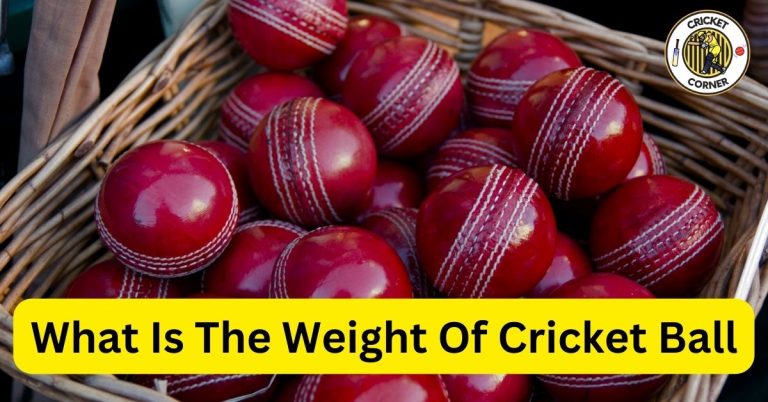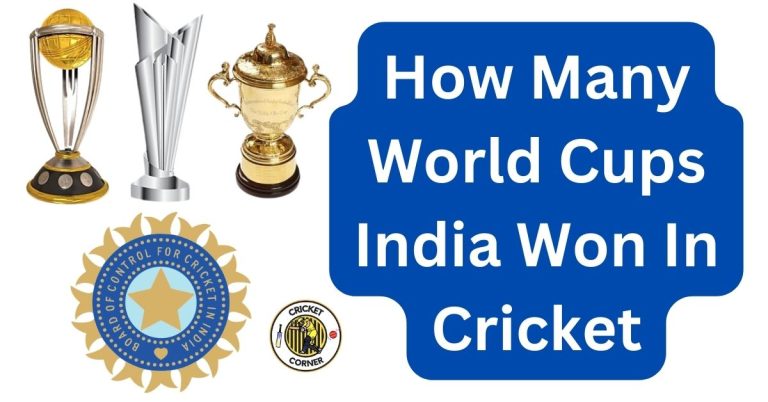What Is The Length Of Cricket Pitch
So, you’re a cricket fan and you want to know the length of the pitch? Well, let me tell you, it’s not just some arbitrary measurement. No, no, no. The length of the cricket pitch is as crucial to the game as a cup of chai is to a morning in Mumbai.
Picture this: two teams facing off on a field, each player armed with his bat or ball, ready for battle. But what’s that in between them? Oh yeah, just the pitch – that little patch of grass where all the action goes down. And trust us when we say it’s not just any old patch of grass. It has specific dimensions that can make or break a team’s strategy. So sit tight and get ready to learn about the importance and history behind this critical element of cricket – because knowing its length might just be the difference between winning and losing!
Importance of the Cricket Pitch in the Game of Cricket
The length of the cricket pitch may remain constant, but its importance cannot be overstated – like the strings on a guitar that never change, yet shape every melody played on it. The dimensions of the cricket pitch are crucial to the game of cricket. Without them, we would not have wickets or creases, and the game would be reduced to mere chaos.
The return crease and popping crease serve as boundaries for the players and dictate their movements during play. The stumps and bails provide targets for bowlers and fielders alike. And let’s not forget about the white lines that help umpires determine whether a ball is in or out of play. All these elements come together to create a playing field that is both challenging and fair.
For players, understanding the dimensions of the cricket pitch is essential for success on the field. Knowing where to stand when batting or bowling can make all the difference between hitting a six or getting bowled out. For spectators, watching a match unfold on a well-maintained cricket pitch can be an awe-inspiring experience. So next time you watch a game of cricket, take a moment to appreciate how important those seemingly mundane measurements really are.
Understanding the Dimensions of the Cricket Pitch
The length of a cricket pitch is 22 yards or 66 feet (20.12 meters). The pitch is not just any random stretch of land; it’s a precisely measured strip that serves as the battleground between two teams.
In addition to its length, the cricket pitch has other critical elements such as white lines, stumps, bails, crease, bowling crease, popping crease and return crease. The popping and return creases define where the batsman stands and how far they can move outside their safe zone. These features serve as reference points for umpires while making calls on whether balls are wide or no balls.

It’s essential to note that the standard international cricket pitch length does not change irrespective of country or league. However, junior cricket leagues may use shorter pitches ranging from 15-22 yards depending on regulations set by respective boards. Understanding these dimensions helps players appreciate how much space they have during play and how best to strategize their moves on this crucial field.
Role of the Bowling Crease and Popping Crease
When stepping onto the cricket field, players must be aware of the precise measurements and dimensions that come into play. The cricket pitch length in feet is 66 feet, but it’s not just the length that matters. The popping crease and bowling crease serve as critical reference points for umpires and impact a batsman’s safe zone.
The distance between stumps in cricket is also important to note. The standard height of the stumps is 71.10 inches or mini, but it’s their placement that really matters. The return crease from the middle stump measures 1.32 (4 ft 4 in), while the popping crease from stumps measures 1.22 (4 feet). These distances are crucial for determining whether a ball is wide or if a bowler has committed a back foot ‘No Ball’.

In short, understanding cricket pitch measurement is essential for everyone involved in the game – from players to umpires to spectators. Knowing how each detail impacts gameplay can make all the difference when it comes down to winning or losing. So next time you step onto the field, take note of these critical measurements and use them to your advantage.
How Pitch Length Affects the Tactics and Strategies of the Game
As a player, you’ll need to consider how altering the distance between the wickets could impact your batting, bowling, and fielding tactics. The standard length of a cricket pitch is 22 yards or approximately 20 meters. This measurement doesn’t change across countries, stadiums, or leagues. However, junior cricket has some variations as approved by respective cricket boards.
The width of the cricket pitch is around 10 feet or 3.05 meters. With this size in mind, you’ll have to plan your shots accordingly. A narrower pitch would mean that it’s easier for bowlers to take wickets while a wider one would allow batsmen more opportunities to score runs.
Moreover, the distance between wickets in cricket is fixed at 2.64 meters or approximately 8 feet and 8 inches apart from each other. Altering this distance can have significant impacts on the game’s tactics and strategies as both batsmen and fielders will have less time to react accordingly. So make sure you adjust your game plans according to these measurements when playing on different pitches!
Evolution of Cricket Pitch Length
Throughout the centuries, cricket’s playing field has undergone several transformations that have revolutionized the way players approach the game. One of these significant changes is the evolution of cricket pitch length. Initially, when laws of cricket were drafted in 1744, there was no standardized length for the pitch. However, in 1845, it was agreed upon that a standard length of 22 yards or 66 feet would be used.
The measurement system used to define cricket pitch length also underwent changes over time. In 1963, when metric measurements became popular, cricket pitch length was officially defined as 20.12 meters or roughly 66 feet. The dimensions of the crease and stumps remained unchanged with this transition from imperial to metric units. Today, international cricket pitch length is still measured at precisely 22 yards or approximately 67 feet.
Despite advancements in technology and changes in rules over time, the standard dimensions of a cricket pitch remain consistent across countries and leagues worldwide. Junior cricketers may play on smaller pitches under specific conditions set by their respective boards; however, for all professional matches governed by ICC regulations – regardless of location – the cricket pitch will always measure exactly twenty-two yards long and ten feet wide with return creases at four feet four inches from middle stump and popping creases at four-foot distance from stumps respectively.
Significance of Knowing the Length of the Cricket Pitch
Knowing the dimensions of the playing field is crucial for you as a cricket player, umpire, or spectator to understand the game’s rules and strategies. The length of a cricket pitch is 22 yards or 20.12 meters (or roughly 66 feet), which remains constant regardless of country, stadium, or league. This pitch measurement plays an essential role in determining how far a bowler can deliver the ball and where a batsman should stand.
As a player, knowing the exact length of the cricket pitch in meter or feet is crucial for your batting and bowling strategies. You need to be aware of your position on the pitch at all times to execute your shots successfully and avoid getting caught out by surprise deliveries from opposing bowlers. Similarly, as an umpire, understanding these measurements is vital to make accurate decisions during matches regarding wides and no-balls that can significantly impact gameplay.
Finally, as a spectator, having knowledge about cricket pitch length in meter or feet adds another layer of excitement to watching live matches. It allows you to appreciate how much skill goes into delivering fast-paced balls within such tight boundaries while also marveling at how far some players manage to hit those same balls with ease. So next time you’re enjoying a game of cricket either on TV or in person, remember just how significant this small yet mighty measurement really is.
Frequently Asked Questions
What is the history behind the drafting of the laws of cricket?
The laws of cricket were first drafted in 1744 by the Marylebone Cricket Club (MCC) which is the custodian of these laws and they have been amended seven times.
How does the length of the cricket pitch impact the game of cricket?
You might be surprised to learn that the length of a cricket pitch has a big impact on the game. It affects batting, bowling, and fielding strategies. Plus, it’s the safe zone for batsmen. All 22 yards of it.
Are there any exceptions to the standard length of the cricket pitch for junior cricket?
Junior cricket is the exception to standard pitch length, with some countries shortening it for younger players. For example, Australia’s under-10s play on 16-yard pitches to aid skill development. However, as players progress through the age groups and reach under-16 level, they play on a full 22-yard pitch to prepare them for the transition to senior cricket.’
Who is responsible for maintaining and amending the laws of cricket?
You’re probably wondering who’s in charge of the laws of cricket. Well, it’s the International Cricket Council (ICC). They’ve been keeping things in order since taking over from the Marylebone Cricket Club (MCC) back in the day.
How does the length of the cricket pitch affect the performance of the players?
So, you want to know how pitch length affects the players? Well, let’s just say a shorter pitch means less time for bowlers to build up speed and more chances for batsmen to hit big. But don’t worry, it’s still 22 yards no matter where you play.





